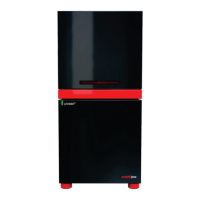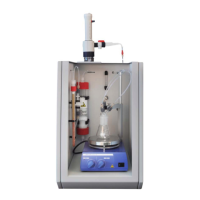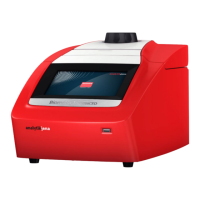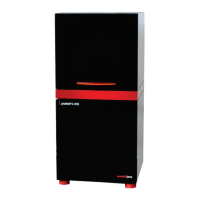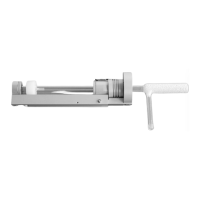Do you have a question about the Analytik Jena PlasmaQuant PQ 9000 and is the answer not in the manual?
General safety guidelines for ensuring error-free and safe operation of the PlasmaQuant PQ 9000.
Details qualifications, training, and responsibilities for personnel operating the device.
General safety notes for device operation, including protective equipment and ventilation.
Safety rules for working with electrical components, highlighting lethal voltage risks.
Details hazards from plasma, including radiation, heat, and electrical discharge, with precautions.
Safety guidelines to be followed during maintenance and repair work on the device.
Procedures to follow and actions to take in case of emergencies.
Details the mains connection requirements and electrical safety precautions.
Instructions for gas supply, including recommended gases and safety measures.
Step-by-step guide for installing the torch, nebulizer, and sample supply system.
Procedure for powering on the device and igniting the plasma.
Procedure for safely switching off the device and its components.
How to use the plasma deactivation switch for fault management.
Steps to set up a method, load a sequence, and start a measurement.
Lists common error codes, their causes, and remedies for the PlasmaQuant PQ 9000.
Addresses problems not detected by system monitoring, including no signal and implausible results.
Detailed steps for preparing the device for safe transport, including draining water and disassembly.
General safety guidelines for ensuring error-free and safe operation of the PlasmaQuant PQ 9000.
Details qualifications, training, and responsibilities for personnel operating the device.
General safety notes for device operation, including protective equipment and ventilation.
Safety rules for working with electrical components, highlighting lethal voltage risks.
Details hazards from plasma, including radiation, heat, and electrical discharge, with precautions.
Safety guidelines to be followed during maintenance and repair work on the device.
Procedures to follow and actions to take in case of emergencies.
Details the mains connection requirements and electrical safety precautions.
Instructions for gas supply, including recommended gases and safety measures.
Step-by-step guide for installing the torch, nebulizer, and sample supply system.
Procedure for powering on the device and igniting the plasma.
Procedure for safely switching off the device and its components.
How to use the plasma deactivation switch for fault management.
Steps to set up a method, load a sequence, and start a measurement.
Lists common error codes, their causes, and remedies for the PlasmaQuant PQ 9000.
Addresses problems not detected by system monitoring, including no signal and implausible results.
Detailed steps for preparing the device for safe transport, including draining water and disassembly.
| Type | Inductively Coupled Plasma Optical Emission Spectrometer (ICP-OES) |
|---|---|
| Detection | CCD detector |
| Plasma Source | Inductively Coupled Plasma (ICP) |
| Mass Range | Not applicable (ICP-OES) |
| Data Acquisition | CCD detector |
| Light Source | ICP (Inductively Coupled Plasma) |
| Atomization | ICP (Inductively Coupled Plasma) |
| RF Generator | Solid-state |
| Torch | Demountable quartz torch |
| Gas Consumption | Argon (Ar) |
| Coolant Gas Flow | 12 - 15 L/min |
| Nebulizer Gas Flow | 0.5 - 1.0 L/min |
| Power Requirements | 230 V, 50/60 Hz, 16 A |
